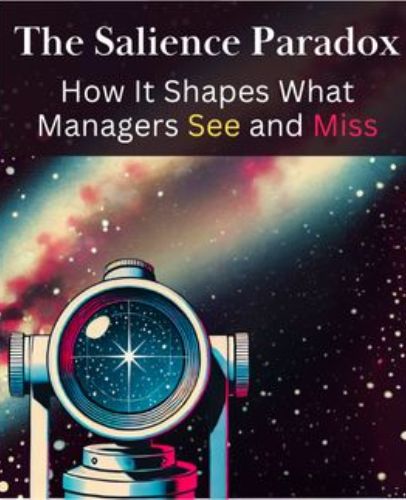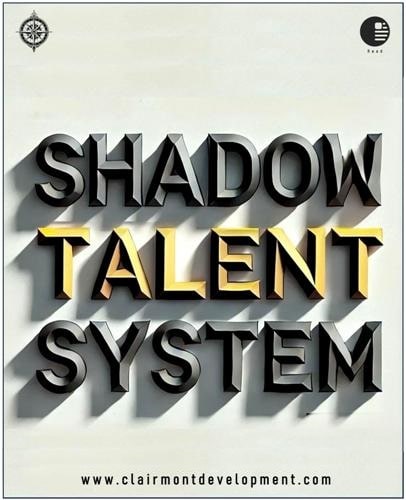Developing Impactful Training to Motivate the Elephant
“Until you make the unconscious conscious, it will direct your life and you will call it fate.”
Carl Jung, the famed Swiss psychiatrist.
Earlier we discussed how the mind operates in a conscious and subconscious manner. This has major implications when it comes to professional development as the subconscious side plays such a large factor in changing behavior and is often overlooked in corporate training. In an earlier piece, we introduced the concept of the elephant and the rider part 1 of Default Mindset. In the metaphor, the elephant represents the subconscious part of our brain, and the rider stands for the conscious side (Based on the book by Dan and Chip Heath – Switch: How to Change Things When Change is Hard). Before we build on the metaphor a bit more, let’s do a quick primer.
The Rider: Represents the prefrontal cortex of the brain where the analytical, rational and evidence-based decision making takes place. It represents about 5% of the decision-making process.
The Elephant: Represents the amygdala part of the brain where automatic, emotional and visceral responses (or in some cases reactions) happen. This is where 95% of the decision making happens. It is referred to as your unconscious or default mind.
The Path: Represents the external environment that we operate in. It is the stimuli that our brain must process in effort to respond to that.
The rider can win in the short-term development, but for a long-term impact you need both! With that in mind let’s look at the Elephant in the room! (pun intended).
Understanding the Elephant
The key is to target the critical step in how the subconscious mind operates. In this case it is the beliefs that it holds. This leads to understanding how to change your worldview or beliefs and is where things get interesting. Based on Neuroscience of Change research on the Default Mind done by Kelly Mcgonical at the Stanford University, we know that:
- The first thing that it does is provide a running commentary on whatever it is experiencing. It asks one simple question! What is wrong and what can be improved? It looks for faults to find solutions.
o It begins to form an opinion on what you see, hear and feel.
o It prefers to criticize over finding what is good about the experience.
o It pulls out what is wrong with the present moment.
o It begins to think about alternate realities.
o It begins to concoct the ways things should be if things were really the way we want them.
● The next thing it does is time travel. A study at Harvard showed that we spend up to 47% of our time not in the present moment. It goes into the future and imagines what it would be like if things were to go as you plan. This is the way the brain escapes from the present moment which reinforces dissatisfaction with the present moment. The problem is, it is escaping to something that is less satisfying and less rewarding.
It goes to the past and thinks about what you did. And at the same time transporting you into imaginary scenarios on how it could be better. This results in missing out on whatever is happening in the present moment.
● It is always looking for a sense of who you are. It is trying to create a sense of identity. That is when we are the most comfortable knowing who we are.
o I am the kind of person who…
o The things I like to do…
o I don’t like to do…
When you experience failure, or someone challenges that sense of self, you feel threatened and want to defend that sense of self. Remember – we really don’t want to fail because we are all insecure. Failing is one of the best ways to learn and strengthen the myelin around the neurons. And the fight continues ☺
● It is always thinking of other people. It (your brain) is wondering what they (other people) are thinking about you and you are thinking about what category you can put them into. You start up with the comparing game and how you compare to them, etc.
This unfortunately creates a sense of separation from others. It is trying to find what distinguishes you from everyone else. It is trying to build up the sense of self so that:
o It feels good about itself.
o It knows who it is.
Here is the problem: Instead of learning from shortcomings, you experience anger, frustration and anxiety, because you feel alone. And you start to feel that you are broken. Asking yourself – what is wrong with me? Connection is the very thing we need to develop. It gives us the ability to see what is common to all of us. Connection happens when you see what you have in common with everyone and that we are in fact not alone.
How can we develop impactful training to motivate the Elephant?
Based on how the unconscious mind processes information, we can see where we can step in and create space to “influence the Elephant”. Below are some examples that we include in training to help address the forces at play within each of us.
- Go Small: The first thing we can do is to Go Small. The default mind loves immediate gratification. We need to look for ways to give that satisfaction. Lorne Whitehead wrote in the American Journal of Physics about the power of the falling domino effect. Based on his research, he described how a single domino can topple another domino that is 50% larger.
Garry Keller in his book, The One Thing, he speaks about going extreme on the Pareto Principle. This is where 80% of the outcomes are a result of 20% of causes. Keller recommends taking this to the extreme by focusing on the 20% of the 20% of the 20% all the way down to identify the one thing to focus on. He goes on to state “The key is over time. Success is built sequentially. It’s one thing at a time.” By putting all your efforts into that one thing, you will be able to increase the likelihood of achieving it and giving the Elephant some food and go into the next challenge with momentum. In our training programs, we work with participants on identifying that first domino to focus on and tackle.
- Act as if: One of the solutions is to adopt “fixed-role therapy” as developed by the 20th century psychologist George Kelly. In this practice you can start to shape your personality by acting as if you ARE the person you want to be. While there is a lot to unpack in that practice (this is not the format, I am definitely not the one to dissect it), we can apply some principles to professional development. Eric Geitens wrote in his book, Resilience, that we need to start with our Identity and that will drive our Beliefs which then impacts our Feelings. In this way, if our actions align with our Identity they will impact our beliefs. This is contrary to how we normally act with our Feelings being the defining factor on how we operate. Remember, feelings are Elephant food and the major motivating factor that drives it. There is some fascinating work done out of the University of London on how the brain acts in accordance with one’s expectations. In our Building Career Capital course, we dive into personal brands. While traditionally your brand is something you show to the world, additionally it is important for you to start thinking (and acting) in manners that are consistent with your brand.
- Get Together: Richard Thaler in his book, Nudge, states “Humans are easily nudged by other humans. Why? One reason is that we like to conform.” We all look for cues from others on how we should behave. If we can emulate others, the Elephant will naturally follow. Why? Because it is easy and efficient, and that is what the default mind wants. The motivational speaker, Jim Rohm, famously says that “you are the average of the 5 people that you spend the most time with’’. In the context of professional development this is huge. It speaks to the importance of surrounding yourself with others that have the qualities that you want to develop. Dr. David McClelland, a social psychologist of Harvard did research and found the people you habitually associate with determine as much as 95 percent of your success or failure in life.
This is incredibly important in the work context. If you are surrounded by a toxic environment where the norm is to complain and place blame on others, that is what your Elephant will want to do. If your goal is to develop, you need to be mindful of your environment. In the network section of Building Career Capital course, we discuss how to intentionally develop a network that will be beneficial to your development.
- Be Mindful: Bobby Jones, golfing legend, once said “If you don’t know what you are trying to do, when something goes wrong, you will not be able to fix it.” As soon as we are aware of what we are doing and why we are doing it, we have an opportunity to break the process and interrupt the Elephant from doing an undesirable action. In the book The Mindful Workplace by Michael Chaskalson, he references the Mental Health Foundation report’s findings. While there are numerous benefits of mindfulness practices in the report, in this context we will pull out a few. People who practice mindfulness:
- Feel more in control of their behavior and are more able to override or change internal thoughts and feelings and resist acting on impulse.
- They are less likely to react defensively or aggressively when they feel threatened.
- Have greater awareness, understanding, and acceptance of their emotions, and recover from bad moods more quickly.
Based on those findings we can see how the practices of mindfulness can impact professional development. One of the characteristics of the default mind is to narrow the scope of options when threatened and move on quickly to find comfort. When we are working on our development, at times, it will be uncomfortable and the ability to navigate those feelings will significantly increase your likelihood of success. We incorporate small exercises throughout our programs to introduce the practice to participants.
- Challenge yourself: I remember there was a situation that I found myself at work and I spoke to my father about. I was nervous about introducing a new concept. It was different and I was not sure what the outcome would be. He simply asked me what could happen? My default mind had concocted a rather ridiculous story about a series of events that would ultimately end in me getting terminated. He suggested that I write this down and then look at it and ask myself about the likelihood of this taking place. Once I saw it on paper, I was able to assess it as the Rider (logically) and saw how silly the story that my default mind had created. We need to have the ability to challenge ourselves.
- Don’t fight the Fed: This is a mantra that suggests you should align your choices with the actions of the Federal Reserve. In short, it means regardless of what you think is “right” there are bigger forces at play that will dictate the environment. This is similar to thinking about the Elephant.
When it comes to impactful training and changing behavior, most participants will start to adjust their behaviors. Most of these behaviors are automatic. Therefore, they are depending on the Rider (or their willpower) to direct the Elephant. In most cases, the Rider will become tired and ultimately lose to the automatic behaviors that have been built up and sit in the unconscious side of the brain. That exhaustion of self-control has a direct impact on the mental muscles they need to make the change. As a result, after a short while the Rider will stop trying and the Elephant will return to the practices that make it comfortable! The challenge is, the result of mastering behavioral change is a lagging metric, not a leading metric. That is what makes it difficult as the Elephant is looking for immediate gratification. The trick here is to stop trying to do everything based on will power alone.
For sustainable development, engage Rider, motivate the Elephant, and shape the Path.
In the end, there is not an easy fix, but the more we understand the reason that we do things the more opportunities we give ourselves to change and adopt new behaviors. This is a key element to building effective and impactful training programs. At Clairmont, we think about how we can support participants not only by providing them with information but helping them with the process of changing. This is a critical element for talent development initiatives to be successful. Our goal is to work with organizations to improve training and development strategy. We understand that the default mind is a powerful tool, and, in most cases, we need it to operate in its capacity. If it didn’t work this way, we would be overwhelmed with thoughts and decisions and would not be able to operate! The trick is to have it work for us in the most beneficial manner that is consistent with our goals and objectives.
Photo by Geran De Klerk
References:
- Bradt, S. (2019, May 2). Wandering mind not a happy mind. Harvard Gazette.
- Chaskalson, M. (2011). The Mindful Workplace: Developing Resilient Individuals and Resonant Organizations with MBSR
- Geitens, E. (2015). Resilience
- Haidt, J. (2012). The righteous mind: Why good people are divided by politics and religion.
- Aeon Essays. (2019, July 4) How our brain sculpts experience in line with our expectations |
- Keller, G. (2021). The One Thing
- Kelly, G. A. (1973). Fixed role therapy. Direct psychotherapy, 28, 394-422.
- McClelland, D. C. (1965). Toward a theory of motive acquisition. American psychologist, 20(5), 321.
- McGonigal, K. (2012). The Neuroscience of Change
- Thaler, R. (2008). Nudge: Improving Decisions about Health, Wealth, and Happiness
- Whitehead, L. A. (1983). Domino“chain reaction”. American Journal of Physics, 51(2), 182-182.







Very good article. Thanks for sharing. It is important for all of us to know more about our mind.
Great article. I should send it to my friends.
As a psychologist I really enjoyed this article.
Thanks a lot. I hope I share on of your articles in our website.